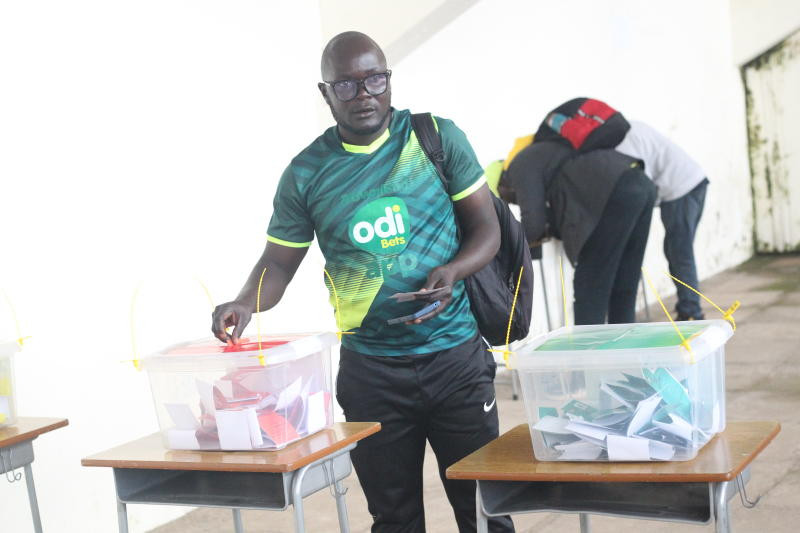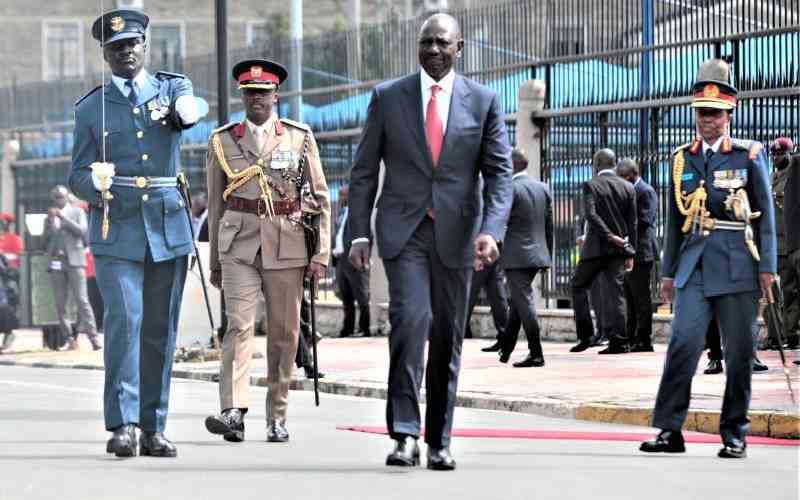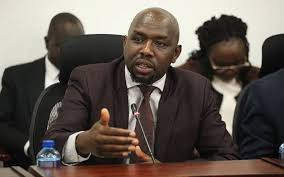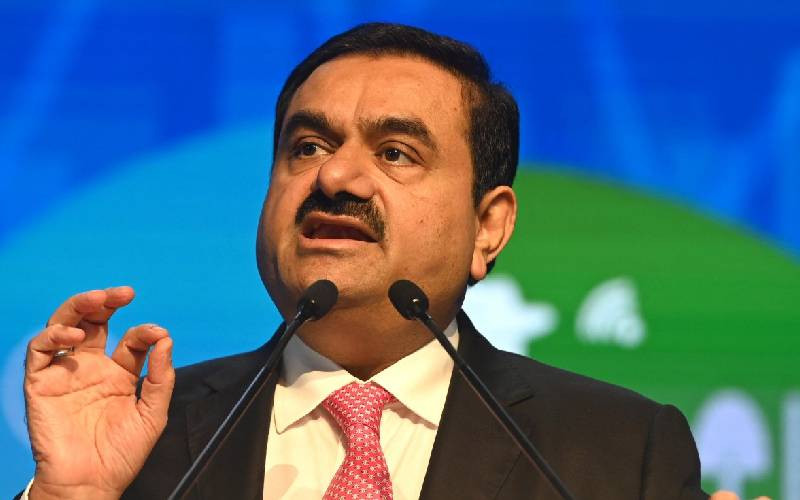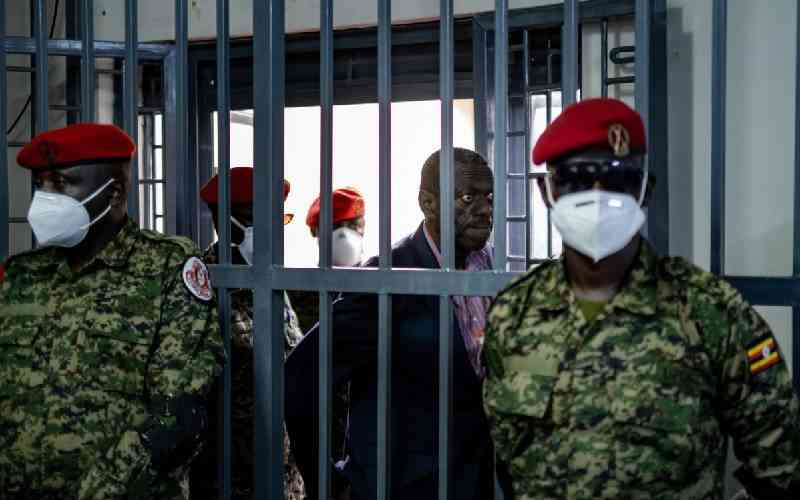
In 2018, the United Nations High-Level Meeting (UNHLM) held in New York made a political declaration on the fight against Tuberculosis (TB) under Resolution A/RES/73/3.
In this momentous meeting, several promises and commitments were made by the heads of state and representatives of states in mobilising resources needed to help achieve the UNHLM targets by 2022. The clock is ticking.
The resolution was meant to catalyse and augment sustainable development goals 3.3 which calls for ending Aids, tuberculosis, malaria and neglected tropical diseases as well as combat hepatitis, water-borne diseases and other communicable diseases by 2030.
Therefore, it is prudent for us to take stock of the TB scorecard and check whether there is a need to boost awareness or urge political action before the timeline expires.
On March 24 every year, the world commemorates World TB Day. In this year’s theme, ‘The Clock is Ticking’, World Health Organisation (WHO) reminds us to refocus and reinvigorate the fight against TB that causes 4,000 deaths and infects 28,000 people daily globally.
The situation, ostensibly, is worsening due to Covid-19 that is inopportunely dissipating medical resources and attention away from providing necessary life-saving diagnosis, medicine and care to people suffering from TB.
This puts End TB progress in jeopardy, hence thwarting equitable access to prevention and care in line with WHO’s and President Uhuru Kenyatta’s Agenda Four drive towards achieving Universal Health Coverage.
An information note that was released by WHO last December indicated a drastic drop of cases in several high TB burden countries including Kenya as measures to respond to and control the pandemic were instituted.
Alarmingly, disease modeling experts projected that if Covid-19 led to a global reduction of 25 per cent of expected TB notification for six months, then we could expect a 26 per cent increase in TB deaths, painfully bringing us to the levels of TB mortality that we had in 2012.
With this worrying trend, every country is encouraged to employ innovative people-centred outpatient and community-based care approaches, which will primarily maintain continuity of essential services for people affected with TB during the pandemic without social stigma and discriminatory behaviours that have the propensity to hamper public health response.
Equally, most partners have sounded an alarm that while we focus on Covid-19, all the stakeholders and experts need to galvanise a recovery plan to get TB responses back on track and find the leaking and/or missing potential patients that have been impeded by Covid-19.
This way, we shall reach the UNHLM targets, the End TB Strategy, and the Global Plan to End TB (2018-2022).
In bolstering the above strategies and efforts, a high-quality laboratory diagnostic system that uses modern diagnostic is a prerequisite for the early, rapid and accurate detection to TB and drug resistance.
This explains why in Kenya, TB microscopy sites have tremendously increased from 1,806 to 2,409 as alluded by National Strategic Plan for Tuberculosis, Leprosy and Lung Health (2019-2023).
Stay informed. Subscribe to our newsletter
Other scholars have firmly, without any self-aggrandisement, said that TB is a laboratory diagnosis disease.
Cognisant of this fact, the division unequivocally and exponentially increased Gene Xpert machines from three in 2011 to 189 in 2018 and is still strategically placing more in every corner of the country, including hard-to-reach areas like Turkana and Mandera.
These state-of-the-art machines have the capacity to detect mycobacterium tuberculosis (an organism that causes TB) and whether the organism is resistant to one of the first line drugs called rifampicin.
These have led to an increase in the proportion of notified TB cases with a rapid diagnostic test that conveys results through short messages (SMS) and email alerts.
The TB and lung health programme is at the forefront in espousing new technologies which will help improve TB diagnostic capacity despite the meagre funding (18 per cent) from Global Fund compared to HIV/Aids (50 per cent) and malaria (32 per cent).
With this sturdy prowess, the programme is undeviatingly working toward its mission which aims to accelerate the reduction of TB, leprosy and lung diseases burden through provision of people-centred, universally accessible, acceptable and affordable quality services in Kenya, as stipulated in Article 43 of the Kenyan 2010 Constitution.
We need to embrace the gather all, scatter none phenomenon and recognise that everyone has the responsibility to fight TB right from the community to the executive level, private to public sectors (public private mix), civil society organisations to technical partners and researchers.
Otherwise the rollout of the Covid-19 vaccine will create a wide berth for implementation of TB interventions.
Due to the vulnerability of TB patients, epistemically, the only humane way to celebrate the World TB Day is to break the adage of quid pro quo and don your mask appropriately covering your mouth and nose in order to save a TB patient from contracting Covid-19.
-Mr Maragia is a County Medical Laboratory Coordinator-Turkana County. [email protected]
 The Standard Group Plc is a
multi-media organization with investments in media platforms spanning newspaper
print operations, television, radio broadcasting, digital and online services. The
Standard Group is recognized as a leading multi-media house in Kenya with a key
influence in matters of national and international interest.
The Standard Group Plc is a
multi-media organization with investments in media platforms spanning newspaper
print operations, television, radio broadcasting, digital and online services. The
Standard Group is recognized as a leading multi-media house in Kenya with a key
influence in matters of national and international interest.
 The Standard Group Plc is a
multi-media organization with investments in media platforms spanning newspaper
print operations, television, radio broadcasting, digital and online services. The
Standard Group is recognized as a leading multi-media house in Kenya with a key
influence in matters of national and international interest.
The Standard Group Plc is a
multi-media organization with investments in media platforms spanning newspaper
print operations, television, radio broadcasting, digital and online services. The
Standard Group is recognized as a leading multi-media house in Kenya with a key
influence in matters of national and international interest.



